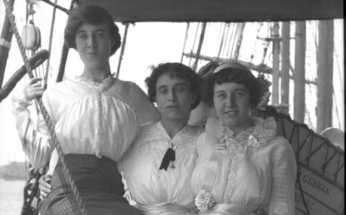Gender and Migration in Gulf – S Irudaya Rajan (editor)
The migrant population makes up over 75 per cent of the total population of the Gulf Cooperation Council (GCC) countries of Saudi Arabia, the United Arab Emirates, Kuwait, Qatar, Oman and Bahrain. Gulf being a resource-dependent state, the majority of male migrants are engaged in production and construction, women are disproportionately engaged in the service sector— care work sectors such as babysitters, caregivers, cleaners; but are employed mainly as domestic workers. Increasingly, however, a significant number are also employed as skilled workers such as nurses, medical practitioners or school teachers. These women are mainly from South and South East Asia such as India, Sri Lanka, Nepal, Bangladesh, the Philippines and Indonesia. In fact, women migrants outnumber men migrants from countries like Sri Lanka and constitute about half of all migrants from the Philippines. Despite their large presence in the Gulf, they encounter several issues and hurdles at every stage of migration – at the pre-departure stage, while they are at their destination, and also during their eventual return back home.
As such, this publication looks to provide an interdisciplinary, holistic and critical look at these various issues through a country-wise analysis of sending countries and receiving countries in the GCC. The book will look at the various trends of female migration into and within the Gulf. The following broad areas are covered:
1. Trends and Drivers of female migration to the Gulf
2. The analysis of social networks in both the sending and receiving countries that enable
migratory routes.
3. Emigration regulations and the role of state and non-state actors such as recruiting agents in influencing female migration to the Gulf
4. Labour Market regulations and constraints for domestic workers in the Gulf
5. The Gulf as a region of transit for high skilled female workers, like nurses, for eventual
migration to developed Western Economies
7. The Social Cost of female migration to the Gulf
8. Irregular/Undocumented migration of women from South and South East Asia to the Gulf
9. Violence against women in the Gulf
10. Role of migration in enhancing gender equality
11. Social welfare policies in part of the sending countries to ensure the welfare of female migrants.
If you are interested to contribute to this venture, please send:
1) An abstract of 150 words in the next three weeks
2) We will strive to include a diverse range of writers from various contexts/regions, as well as a variety of methodological and theoretical perspectives.
S. Irudaya Rajan is Chair of the International Institute of Migration and Development, Kerala (IIMAD), Kerala. He is the Chair of the KNOMAD thematic group on Internal Migration and Urbanization managed by the World Bank. He is editor of two Routledge series, India Migration Report (since 2010) and South Asia Migration Report (since 2017). He can be contacted at rajan@iimad.org
